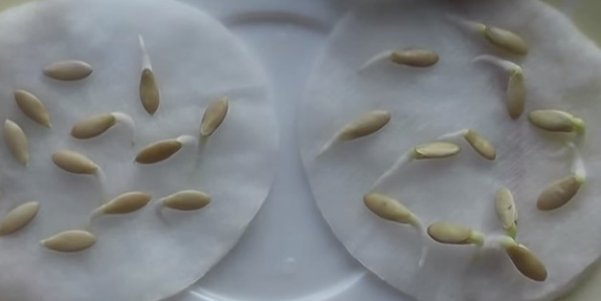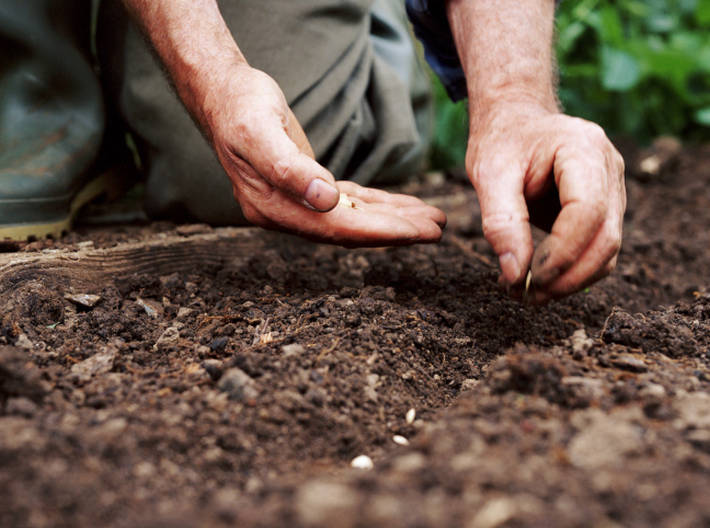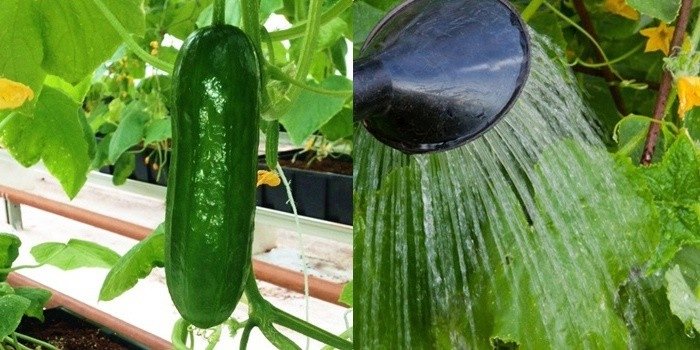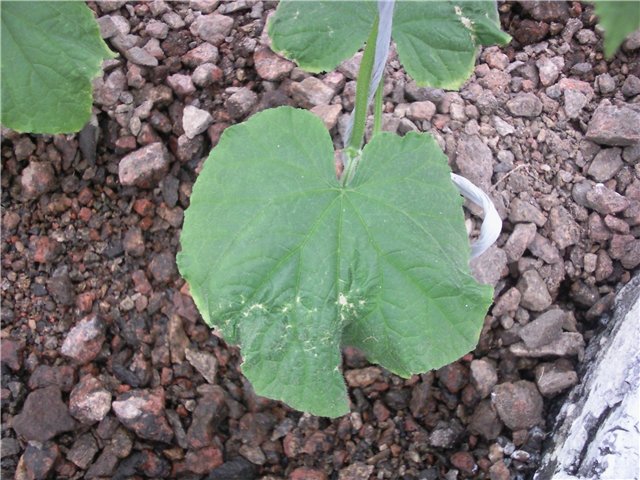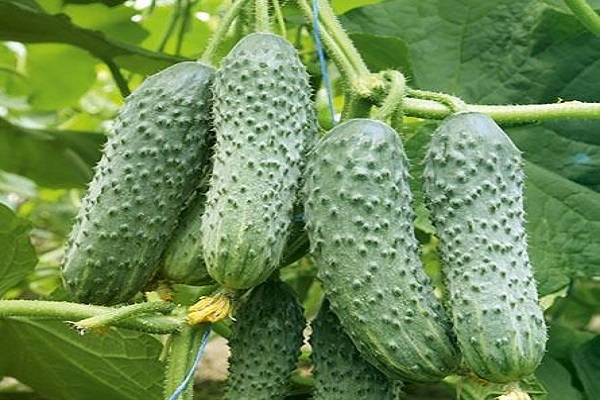Content:
The Merenga variety was bred by the Dutch company Monsanto and has been included in the State Register of Seeds of Russia since 2017. Well acclimatized in Russian conditions, became popular among summer residents and gardeners. A new early variety, a hybrid, does not require special care, but compliance with some important rules of agricultural technology is necessary. Delicious fresh, canned and salted.
Characteristics and description of the variety
Meringue Cucumbers:
- self-pollinating, ovaries appear without the help of bees and other insects;
- can be grown outdoors, but grow better in a greenhouse and yield higher;
- resistant to disease;
- excellent taste, no bitterness and hollowness;
- high productivity;
- universality of consumption;
- early maturity;
- stored for a long time.
The bushes are tall, open type, the leaves are small, in the leaf axils 3-4 cucumbers are tied. It takes 40 - 45 days from germination to fruit, fruiting lasts the entire growing season.
Cucumber Meringue gherkin type, short, up to 12 cm, diameter - 3.5 cm, dark green, tubercles with white thorns, short light stripes on the top of the cucumber. Weight 90 - 100 g. The taste is excellent, genetically without bitterness. Not subject to overgrowth, deformation and yellowing.
In the open field, the yield is 10.2 kg per 1 sq. m, in the greenhouse - up to 15.5 kg.
Agricultural technology of cultivation
Sowing begins in late April, early May, when the soil warms up to +12 - +14 degrees.
Seed preparation
The seeds are pre-processed:
- It is kept in a warm room for 30 days, it is possible near a radiator to get uniform shoots;
- disinfect 1 hour in the infusion: 1/2 glass of water and 30 g of pulp from garlic arrows.
- 12 hours are kept in the solution: 1 liter of water + 1 teaspoon of nitrophoska + the same amount of ash;
- seeds are washed with clean water and left in a humid environment for two days to swell;
- the last stage is 24 hours in the refrigerator.
Meringue cucumbers grow well in open ground and in greenhouses. Direct seeding is less labor-intensive, saves time, effort and money. The seedling method allows you to start planting earlier and wait for the harvest faster, which is higher than in the open field.
Special lamps are sold for illumination. Can be illuminated with neon or krypton lamps.
Landing in open ground
The soil for the garden bed should be light, loamy. In autumn, it is recommended to fertilize and dig up the ground. 10 sq. m need 80 - 90 kg of manure, 400 g of superphosphate or 250 g of potassium salt. You cannot use all fertilizers at once, you need to choose one type and not overdo it, guided by the rule: less is better than more.
In the spring, 10 sq. m add 200 g of ash.
The plot is chosen in a sunny place in the garden, protected from the wind.
The depth of the hole for seeds is 2-4 cm, 3 seeds are planted in each hole. After sowing, the garden bed should be protected from hypothermia in unstable spring weather and from the threat of night frosts. Shelters are removed after the onset of warm days. If the temperature drops below 12 degrees at night, the bed is covered again.
Best precursors for cucumbers: onions, peppers, corn, cabbage. The cucumber is returned to its original place only after 5 years.
It is recommended to prepare the trellises in advance, they are easy to make yourself.They are also grown horizontally, but trellises serve as the prevention of cucumber diseases, promote good air exchange, it is more convenient to harvest from them, and you can form a bush in different ways.
Growing seedlings
Meringue cucumbers are grown through seedlings, which are then transplanted into a greenhouse or into open ground. To grow healthy and robust seedlings, start with preparing the soil. You can buy ready-made mixtures or make yourself from sawdust, peat and humus (1: 2: 2). Top dressing is added to 10 kg of the mixture - 2 tablespoons of ash and 1 tablespoon of nitrophoska.
Seedlings are ready for transplanting in 25 - 30 days. Focusing on this period, it is worth calculating the time of sowing seeds for seedlings in order to prevent its overgrowth.
A few days before transplanting, it is advisable to feed the seedlings with an aqueous solution of complex mineral fertilizers.
To harden the sprouts, shortly before planting, you need to take them out into the open air, each time lengthening the time in the cool. It is necessary to plant the plants after the appearance of 3 - 5 true leaves of a dark green color.
It is recommended to transplant cucumber seedlings in the evening and water well, then the plants will take root better in a new place.
Plant care
Like all cucumbers, the Meringue variety needs timely watering, feeding, weeding and loosening the soil.
Watering, weeding
Cucumbers are watered in the evening with warm water heated by the sun under the root, every other day. After the beginning of flowering and fruiting, the amount of water should be increased. Do not water cucumbers on a sunny day so that the leaves do not get burned. Watering rate - 25 liters per 1 sq. m. Do not allow drying out or excessive moisture.
Remove weeds in a timely manner so as not to inhibit the growth and development of plants and to prevent diseases.
For the normal development of cucumber bushes, it is recommended to remove the lower leaves, especially yellowed ones and shoots up to a height of 60 cm.
Top dressing
Organic matter can be fertilized with Meringue cucumbers as needed throughout the growing period.
Mineral fertilizers are used less often, usually complex fertilizers - superphosphate - are applied.
Fertilizers with chlorine are contraindicated for cucumbers. Nitrogen fertilizers are used in small doses; large quantities of cucumbers are poorly stored and lose their taste.
Diseases and pests
Merenga cucumbers are resistant to diseases. But with insufficiently good care of the plants, they weaken, grow poorly and get sick. Weakened plants are attacked by pests.
An outbreak of cucumber diseases can be provoked by:
- Lack of nutrition;
- Low temperature;
- Insufficient lighting;
- Improper watering, lack or excess of moisture.
You need to know and closely monitor the first signs of the appearance of the disease and traces of pests in order to get rid of them in time.
Table "Diseases and methods of treatment of Meringue cucumbers"
| Diseases | Description of diseases | Prevention and treatment |
|---|---|---|
| Root rot is dangerous throughout plant growth from seedling to harvest. | Roots rot and die off. | Weeding. |
| Causes of occurrence: | Soil treatment with bleach - 200 g per 1 sq. m | |
| poor quality seeds; | Removal of diseased cucumbers and plants. | |
| cold water for irrigation; | ||
| dense soil. | ||
| White rot. | Mucus all over the plant. | Removal of diseased plants. |
| Reason: high humidity. | 10 l of water + 10 g of urea + 2 g of vitriol - the composition of the land. | |
| (1 liter of solution per 10 sq. M) | ||
| Anthracnose due to high humidity. | The leaves have yellow spots. | Diseased plants are treated 20 days before harvest with a solution of bleach (40 g per 10 l of water). |
| Pink bloom throughout the plant. | ||
| The fruits darken and shrivel. |
Table "Pests of cucumbers"
| Pest names | How to detect | How to destroy |
|---|---|---|
| Whitefly | Larvae on the back of the leaves | The larvae are removed with water. |
| For prevention, a cucumber patch is planted with tobacco plants. | ||
| Inta-Vir preparation (1 tablet per 10 liters of water), spray no more than three times. | ||
| Slugs | Mucus, dark droppings, traces of eating on cucumbers | In the evening, 4 g of the drug Metaldehyde per 1 sq. m spread over the garden. Can be repeated only 1 time. |
| Ants | Insects in the garden, passages on the ground and underground, small anthills. | Sweet syrup bottle traps. |
| Spider mite | Spider web threads in beds and plants | Rinse off with water. |
| Sow dill to attract ladybugs that kill ticks. | ||
| Spray onion or garlic husk infusion 4 - 5 times during the cucumber growth period (200 g of husk per 10 liters of water). |
Advantages and disadvantages of the variety
Advantages of Meringue cucumbers:
- self-pollination;
- high productivity;
- early maturation;
- universal in use, tasty;
- good and long-term storage;
- resistant to many diseases.
Meringue cucumbers have practically no flaws. They appear with improper care, with sowing low-quality seeds and with other unfavorable factors.
Despite the fact that the Merengue cucumber is of Dutch selection, it has perfectly adapted to the Russian climate and won the sympathy of local producers. Since this variety is hybrid, positive qualities are not inherited and the seeds cannot be harvested by ourselves. You need to purchase them from trusted suppliers. Good-quality seeds and strict adherence to the rules of agricultural technology guarantee high yields and excellent taste of Merengue cucumbers.

